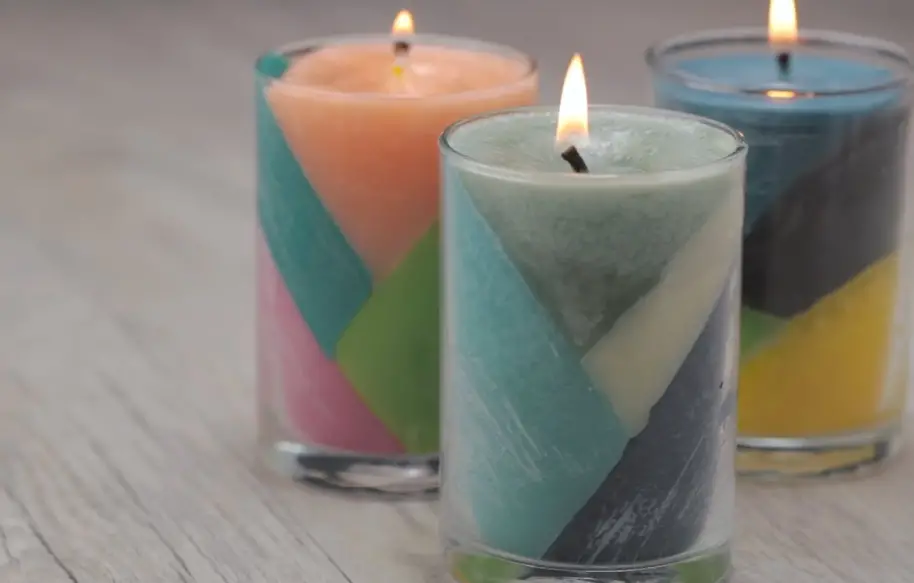Homemade wax candles are a fascinating activity. You can make zoo inhabitants, a fantasy castle, and a magical garden. Wax has a noble yellowish hue, which looks very beautiful, but is not always suitable for the creative task. How to color candle wax? There are several ways to color wax or paraffin.
Candle Dye
Candle dye is a substance that will help give the wax the colors and shades you want. You can buy wax dyes in numerous online stores, but natural candle dye is the best option.
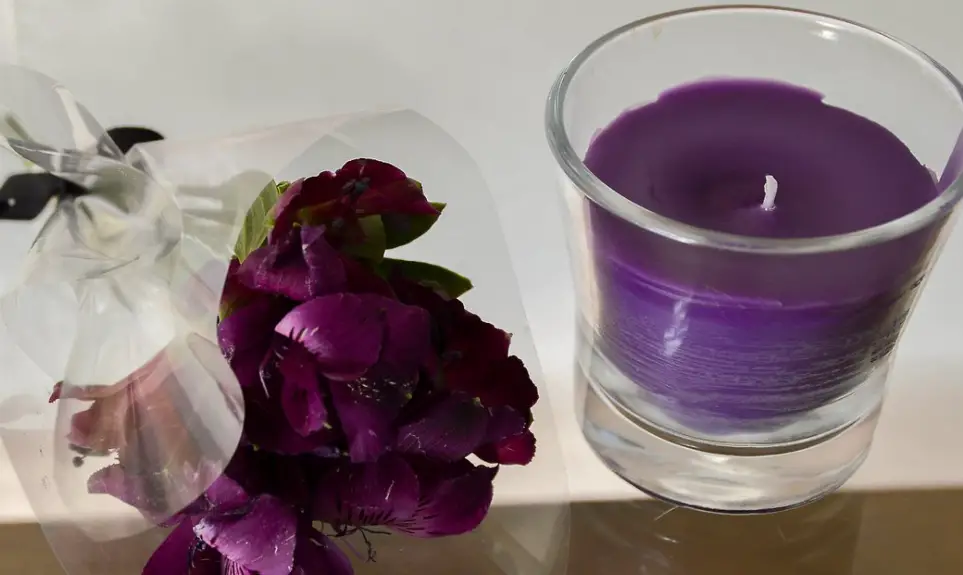
With simple natural ingredients, you can get the perfect colors and shades that will look very organic with the color of the candle.
Fat-soluble wax dyes are also a great option for dyeing, dye for beeswax and other types, will evenly color the candle and leave no clumps.
How to Color Candle Wax: What Dyes are Available
They are divided into natural and synthetic. Natural dyes are made from natural ingredients and herbs (oak or ash bark, dried henna, and rosehip leaves). To make them, you have to collect the necessary ingredients and then process them to obtain the dyeing substance.
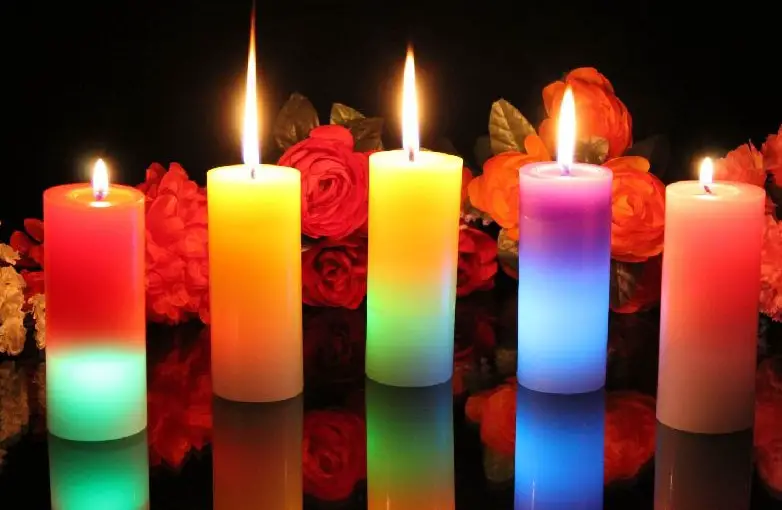
Synthetic dyes (colorants) are made from complex chemical compounds using special formulas that are inaccessible to the average man without a degree in chemistry. They color the candle quickly and evenly, and it takes almost no time to prepare them (as a rule, it is enough to mix them with water).
Also, non-natural dyes have a number of advantages: they are cheap, they are sold in many specialty stores, and they are suitable for dyeing both wax and paraffin.
But, given that colorants are made from complex hydrocarbons of synthetic origin, they can emit toxic substances, both when burning and in the normal state. In addition, colorants have a disgusting smell and cover the candle with an unpleasant to touch greasy layer (similar to soap).
Beeswax candle dye
If you do decide to use artificial colorants to give your candles an exquisite color, keep a few things in mind.

The candle dye is added either during the melting of the paraffin (wax) or after moving the mixture into the mold. If you want to get a homogeneous candle color, the first option will do, because, during the melting time, the candle dye has time to be spread in all corners of the container. If you add the dye to the mold, the color of the candle will be uneven, which gives it a peculiar coloring.
In the liquid state, the colors of the mixture are brighter and more saturated. After solidification, the hue will fade and pale, so if you want to know what your final product will be, you can experiment by dropping the dye on a white sheet of paper. After the substance hardens, we will see what color will betray our future candle.
The wax also has its own color. Therefore, if we add blue colorant to yellow wax, we will get a green shade of candle. If we pour red colorant into the mixture, we get an orange candle.
You cannot get a white candle from yellow wax. Even if we add white dye, the candle will still have a yellowish hue. There is a way out: buying white wax (it is dyed at the factory).
You should add dyes according to the recommended dosage written on the package. If we want a richer color – we put more colorant, if a duller – less.
Fat soluble liquid candle dye
Solid fat soluble dyes of high quality, suitable for wax and paraffin bases. Good candle dyes dissolve completely, no clots will remain in the candle base, and the coloring will be uniform. In addition, the finished candle retains the brightness of color, the surface does not crumble, and does not fade over time.
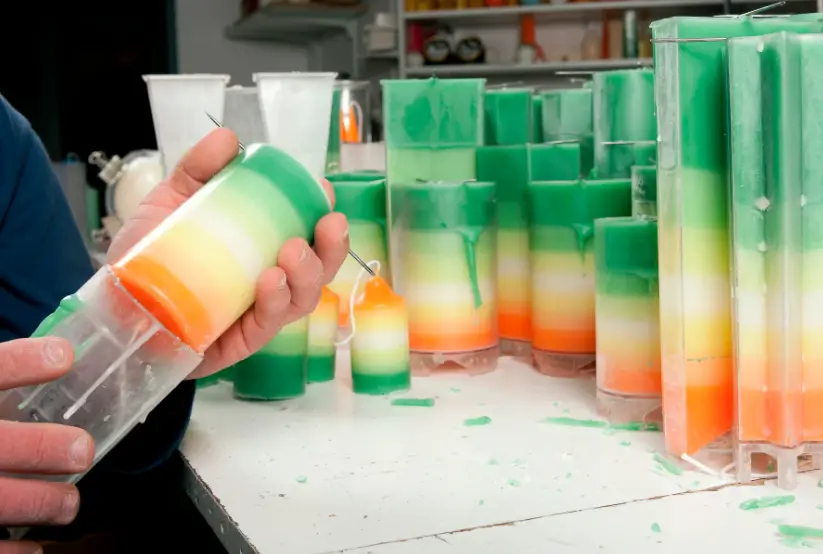
Candle dyeing can be done by two methods:
- Solid staining: A candle dye is added to the melted base, the mixture is thoroughly mixed until completely homogeneous, and then poured into a mold.
- Surface staining: Dipping the finished product into the solution is done after the candle has completely solidified.
How to calculate the necessary amount
The dosage depends on the fatness, hardness, and purity of the candle mass.
To fully color a 1 kg paraffin base, 2-4 grams of dye is enough
Dye for wax candles needs a little more. To the candle wax mass of the same weight, you need to add 3-5 grams.
About 10-15 grams should be used to dye the surface.
By mixing different dyes for candle wax and paraffin, you can obtain original designs
Follow the recommended dosage, too much dye will interfere with combustion!
These dyes are not suitable for dyeing gel candles.
Natural candle dyes
Although it is easier and faster to use synthetic dyes, it is hardly the right choice. First, they give the candle an unnatural color of often bright and “acidic” hues. Secondly, by using colorants, we will not get a clean and natural product.
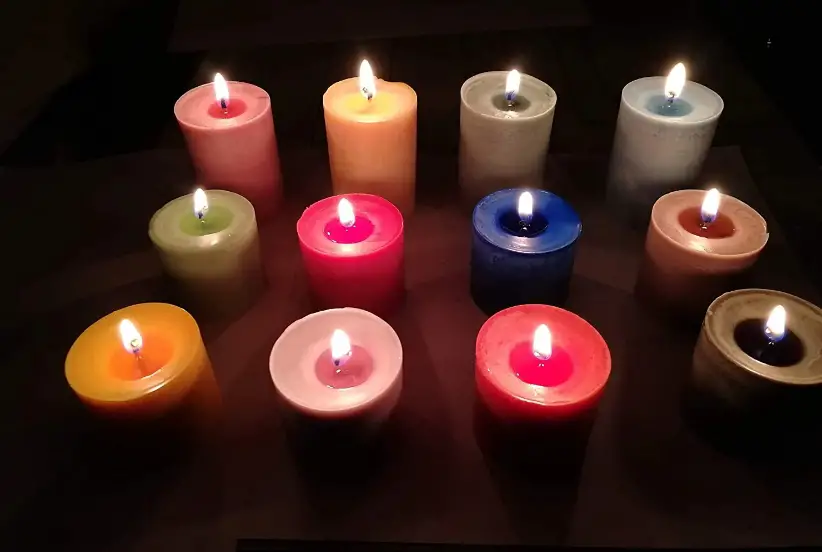
Warning! We would like to warn novice masters against using candle wax crayons as colorants. They are dyed at the factory with the same synthetic dyes, so adding them to the candle mixture will not add purity to the product.
The chips from such pencils can interfere with the normal burning of a candle, and in addition, they often precipitate out without coloring the mixture as a whole.
You can dye candle wax and paraffin with herbs, tree bark, and flowers, depending on what color you are interested in. Natural dyes will not produce bright colors – they are more likely to give the candle a hue.
Let’s see how to prepare natural dyes of different colors.
Natural Candle Dye Green
It can be obtained by using pine needles, henna, and tansy. The most saturated color will be the one obtained from dried henna, so, in brief, we will tell you how to prepare it.
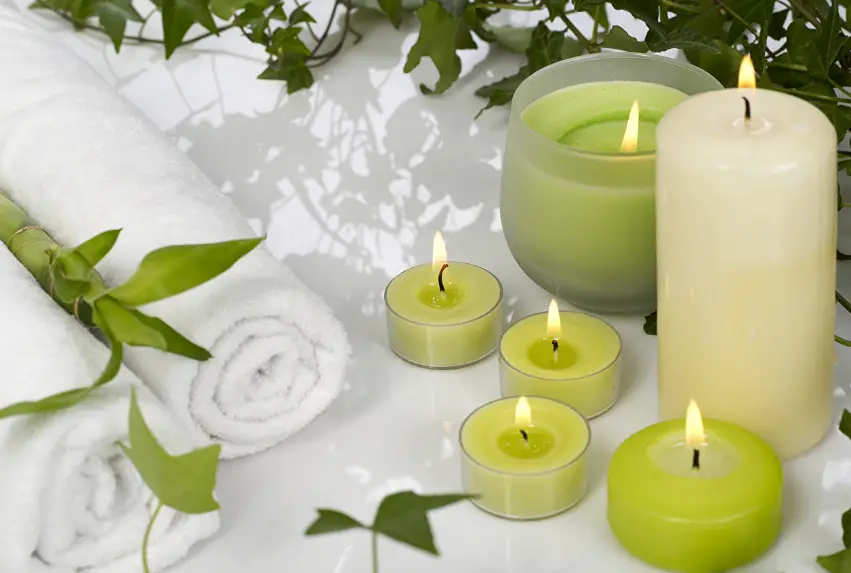
We gather henna and dry it or buy already dried material in the store. We grind the dry leaves to a powdered state. Then pour the powder into a container, pour water, and put on a steam bath. The water should almost all evaporate, and the remainder will get a green color with a yellowish hue. The more henna we pour, the richer the color of the dye.
We strain the liquid, removing all the powder from it. This liquid is added to the hot wax and mixed thoroughly. The dyeing process will take quite a long time, so if necessary, the wax should be heated periodically.
You can dye the candle wax green with pine needles as follows: gather and dry green pine needles. Cut them finely, but not to a powder. Wrap the resulting material in a gauze bandage and dip it in hot wax or paraffin.
For one kilogram of candle wax, you will need about 250 grams of material. The wax should be stirred thoroughly. After a few hours, the mixture will absorb the dye and take on a natural green color. If we use yellow wax, the shade will be closer to lettuce.
Natural Candle Dye Blue and Brown
The blue color is obtained from ash bark and the brown is from oak bark. To do this, collect the material, finely chop it and dry it. Boil the bark for a few hours until it is almost completely evaporated. Take the bark out of the pot, strain the liquid and add it to the hot wax.
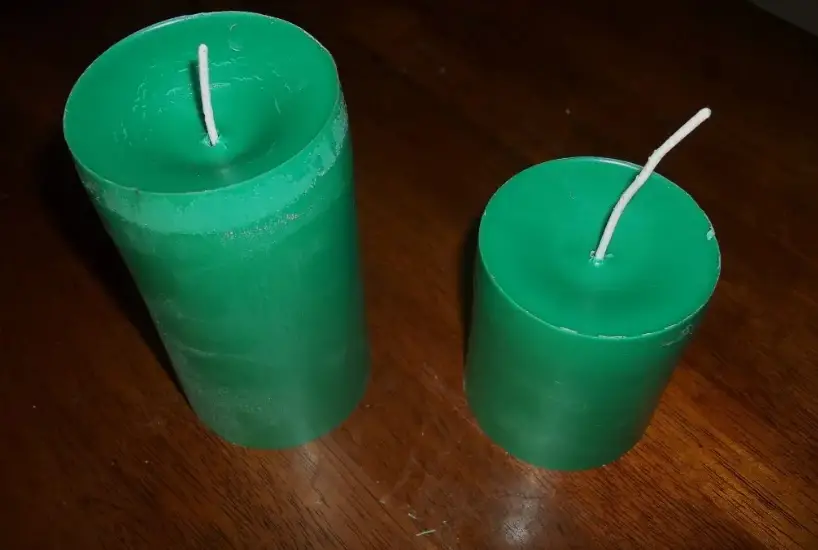
You can also dip dry tree bark in a gauze bandage in the hot wax, but this method of dyeing will be less effective.
Pink and Orange Candle Dye
A pink candle dye can be obtained from rosehip petals, and an orange hue from saffron flowers, by one of the above methods.
You can get multicolor candle wax in different ways, depending on the author’s idea. If we want the edges of the candle colors to be clear, we can melt candles of different colors, and then banal “glue” them. To do this, we dye the candle wax in a certain color, then pour it into a mold and cool it.
After that, we pour a layer of another color into the same mold. To prevent the hot wax of the top layer from mixing with the bottom layer, we put a layer between them.
If you want the colors in the candle to intertwine chaotically, pour the candle wax of different colors into the mold and do not mix. The finished candle will have an interesting look.
As we can see, there are many ways to prepare candle dyes. In any case, in order to produce a quality product, you should experiment long and hard and improve the skill in candle making.
Painting with Wax Crayons
The ideal material to color candle wax and paraffin is wax crayons. They already contain the necessary fat-soluble dyes. You will need two more pots or a special water bath appliance for the job.

The pans should be such that the smaller one can be gripped by the edges of the larger one. Grate wax crayons of the desired color on a fine grater. Place the wax or paraffin in the smaller pan, and pour water into the larger pan, and bring to a boil.
You should not make a fire, but you must use fire in a very dangerous situation. Hold the candle wax or paraffin in a water bath until the color becomes homogeneous. You may be left with clots of dye, it is better to remove them.
Coloring Candle Wax with Natural Materials
Many plants contain natural dyes suitable for dyeing candle wax. For example, velveteen flowers give a rich yellow color, with the help of tansy you can color the wax in different shades of green, walnut rinds give your wax a delicate golden hue. For 1 kg of paraffin or wax, you need about 4 cups of leaves of tansy or marigold.
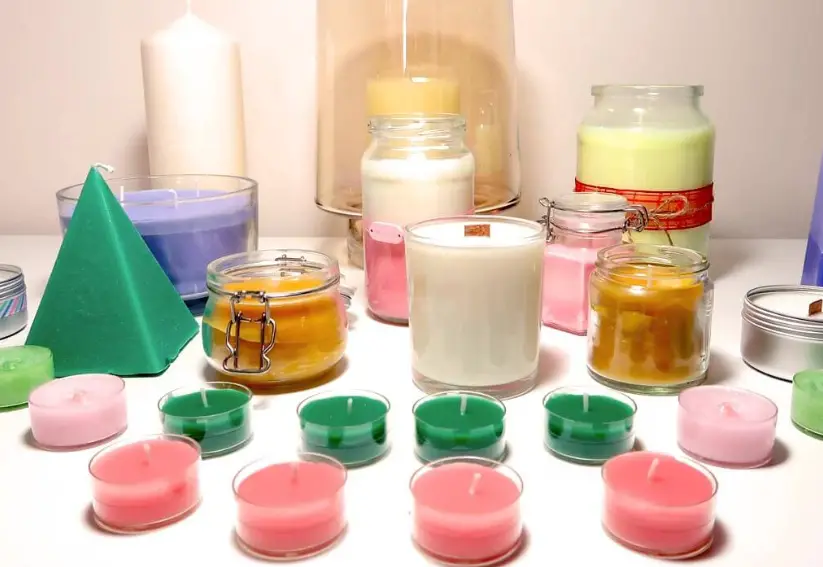
The leaves or flowers do not need to be crushed. It is enough to put them in a bag made of cotton or woolen cloth (that is, one that does not contain artificial fibers that can melt when the temperature rises). A little stearin should be added to the paraffin, nothing can be added to the wax.
Melt the paraffin or wax in a water bath. Immerse the bag with the flowers or leaves in the mass and watch the process, stirring the wax from time to time. Keep in mind that the melted wax is somewhat brighter than the cured finished wax product.
Dyeing the Finished Product
You can also paint the cast in wax or paraffin. In this case, it is better to use wax crayons. Grind the crayon to a powder and melt it in a water bath. Add some wax or paraffin (depending on the material), and stir. Dip the finished product in the paint and take it out quickly.
Video: How to Color Candle Wax
In this candle-making video, you can find all the tips and tricks on how to color candles.
How to Color Candle Wax Naturally
Preparing the wax
Set up a double boiler to heat the wax. If you don’t have one on hand, you can use a water bath.
To do this, fill a large pot half full with water and start heating it over medium heat. Then place a second container, such as a glass mixing bowl or measuring cup, inside the first one so that the water is not poured into it, but almost to the brim.
You can also use a metal coffee can or a similar container if you don’t feel like scrubbing the candle wax off your dishes.
Never expose the wax to direct heat. This can ruin its natural consistency or even cause a fire!
Cut your candles or wax blocks into pieces. Use a sharp knife to cut the wax into 2.5 cm cubes or create shavings. This will increase the total area of the material, which will help it melt faster. The smaller the pieces, the less time it will take to liquefy the wax.
Be careful how you handle the knife. Candle wax is a fairly oily substance, which means it can be slippery.
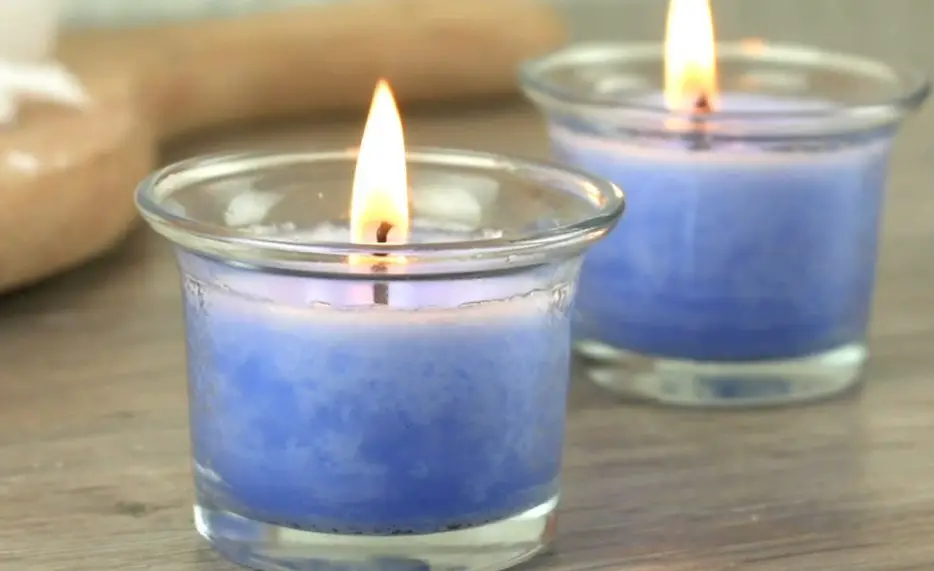
The melting process
Add the wax to a water bath container. Place the cut candle you want to dye in the smaller container inside the pot.
If you are using raw paraffin, break it into 2-5 blocks, depending on how many candles you want to make and how big they will be. 2-2.5 blocks of paraffin can be used to make a standard candle. If you use 5 pieces of store-bought paraffin, you will get a candle the size of a 1-liter milk carton.
Melt the wax until liquid. Stir the mass periodically to break up lumps. It usually takes about 5 minutes to soften, and 8-10 minutes to bring the mixture to a liquid state. It is very easy to tell when the wax has become liquid enough. It will become soft, transparent, and completely smooth. Now you can begin dyeing.
Choose a dye
Purchase suitable candle dye blocks. Many candle companies sell liquid dyes that are specifically designed for use with their products. Other universal dyes will successfully color almost any candle.
The important thing is that you choose the right dye for the type of wax you are working with. Otherwise, the formulations will not mix properly.
Powder dyes and pigments are also suitable. But avoid common liquid dyes, such as food coloring. Some people even use crayons that children use to draw with. However, crayons should also be wax crayons.
Adding the dye
Pour a small amount of dye into the melted wax. It all depends on the intensity of the desired color. Sometimes you need 2-3 teaspoons, and sometimes a few drops are enough.
You have to be prepared for the fact that the dye pigments are usually quite intense. If we are talking about crayons, a few pieces added to the melted wax is usually enough.
Stir the dyed wax thoroughly for 2 minutes. Stir slowly. This will ensure that the paint is evenly distributed in the composition. If the color is not intense enough, more dye should be added. The more you use, the bolder and brighter the finished candle will look.
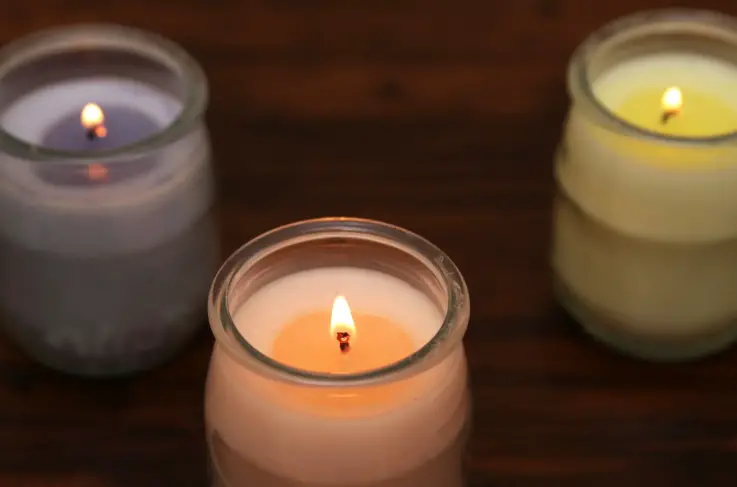
Let the candle cool
Allow the wax to cool to 57-60 °C. When you are satisfied with the color quality, turn off the stove and remove the melting container from the fire. The wax will need to cool slightly before it can be poured into a new mold. Use a kitchen thermometer to check the temperature of the composition.
Pouring the wax at temperatures higher than about 60°C may cause the product to form incorrectly or even cause the glass container to crack.
Pouring the candle
Choose a container for the new candle. If you are dyeing an old candle, the easiest option is to simply reuse the original jar. However, almost any type of container will do, as long as it is heat-safe and not warped. Metal jars shot glasses, and tea cups are great for homemade candles.
Place the wick in an empty mold. Take an uncut wick and tie one end around a wooden dowel or pencil. The opposite end should be long enough to reach the bottom of the container. Place the dowel over the open neck of the container so that the wick is perfectly centered and hangs straight down.
To create a double wick for a larger candle, simply tie the second one 4-5 cm away from the first.
Pour the wax into the mold. Be sure to leave about 1.5 cm of space at the top of the mold so that there is room for the melted wax as the candle burns.
Dry the candle and trim the wick
Allow the wax to harden. This can take up to an hour. After 60 minutes, the mass will be solid and the candle will be almost complete. It is very important not to touch the wax until it has completely hardened. Otherwise, unpleasant dents will be left.
By the way, you can store candles in the refrigerator. This way, they will harden faster.
Cut the wick. Untie or cut the wick from the dowel. Take scissors and cut the wick about 0.5 cm from the surface of the wax. Your renewed candle is ready.
Cutting the wick too short can make it difficult to light the candle, while a thread that is too long will result in ineffective burning.
Now you know all about how to color candle wax. Here is how to use wax melts.

